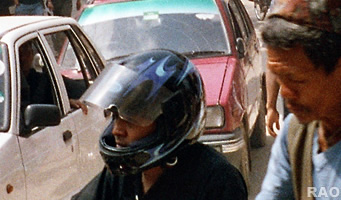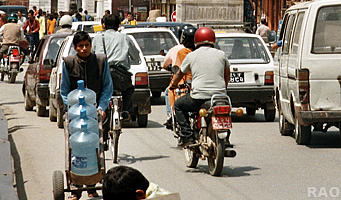 |
Nepal's Environment |
|
|
 |
|
Kathmandu's
Air Pollution
|
|
Electric
solution to Nepalese pollution
|
 |
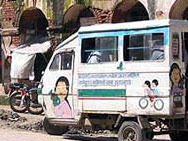 |
| Electric three-wheeler |
| In
South Asia, cooking fuel like paraffin is subsidised so the poor can afford
it, but it often finds its way into the market-priced petrol so an unscrupulous
dealer can make more money.
Electric
vehicles are a common sight on the streets of Kathmandu Paraffin isn't
meant to be burned in car engines and it causes noxious black smoke. |
|
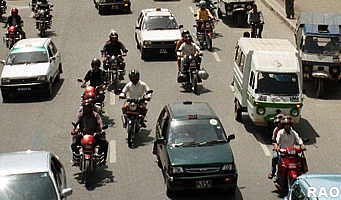 |
Diesel,
too, is also widely used by buses in Kathmandu and the fumes from all those
poisons spewing into the air have produced statistics for respiratory disease
worse than a smokers' ward at a cancer hospital.
Some
people living by the side of the busy Kathmandu ring road, often are suffering
horrible coughs from breathing exhaust fumes.
An
American who was living in Kathmandu for 40 years of his life - who often
commutes by bicycle - was recently told by his doctor to give up smoking. |
|
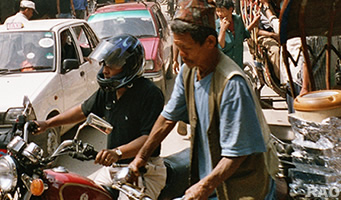 |
The American had never even puffed on a cigarette. An
American engineer, married to a Nepali, has thrown all his effort into
making electric vehicles the norm here.
He
has some success, a fleet of locally designed, battery powered, three wheel
rickshaws carry thousands of passengers around the city every day.
But
the engineer's electric milk float-based buses remain very much on the
drawing board because of Nepali Government inertia. |
|
| Governement
blamed for protecting privileges |
 |
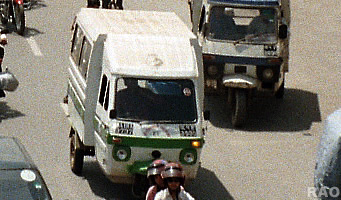 |
Approval
for his project remains perennially stalled at the so called Ministry for
Protection of the Environment, which largely seems to me to see its job
as protecting the privileges of diesel vehicle importers.
The
American engineer is not giving up though, he has come up with a scheme
to manufacture the bus chassis's here in Nepal at the country's only indigenous
car company |
|
|
Information
|
 |
|






